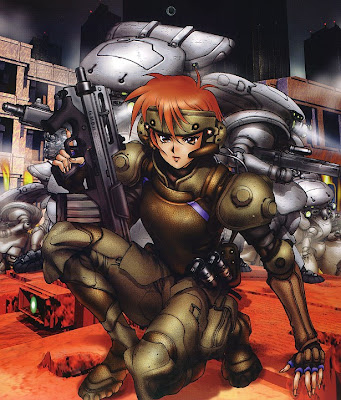
Vulgar Ghost Daydream (Teizokurei Daydream) is a shōnen manga by Saki Okuse (story) and Sankichi Meguro (art), set in modern Japan. As of 2006 there are 9 volumes available (ongoing story, with 10 volumes planned) also adapted as a four episode OVA. The English version released by Geneon changed the title to "Ghost Talker's Daydream", which is not a direct translation of the formal manga title.
This story is centered on a main character named Saiki Misaki who has two jobs, neither of which she is particularly happy with. Officially she is a dominatrix in a BDSM club who writes a column for a sex magazine. Additionally she works for a government agency, The Livelihood Preservation Group, as a necromancer. The term necromancer in this story refers to a person who can speak to and see ghosts, and who sometimes can allow the ghosts to speak with their voice to people who cannot see the ghost. Her government job usually entails helping to remove a troublesome ghost. Misaki considers her government job to be less respectable than her work in the sex industry.
There are many smaller story arcs within the story, although in most cases these stories are important to the main narrative. In some cases they introduce important characters, and in others they are used to explain motivations pertaining to the main characters. In general, these smaller story arcs consist of one or two chapters.
There are three major characters, at least one of which is in every chapter with the exception of chapter 16 Dead Mans Hand. In order of introduction they are: Saiki Misaki, Mitsuru and Souichirou. Many reoccurring and often important characters also populate the series.
The Japanese title translates as teizoku = vulgar + rei = ghost. However there is a pun on the word rei, which can also refer to a companion when spoken. In other words it can be said either Vulgar Ghost or Vulgar Companion, and Misaki Saiki is a professional dominatrix who can also speak to ghosts. A dominatrix could be considered a vulgar companion.
Technorati Tags: Vulgar Ghost Daydream Teizokurei Talker's anime manga japanese japan cartoons cartoon girls comics animation art





